
Are you bored with ordinary flowers? Infuse your garden with vibrant hues using plants such as soft sedum, rich purple lavender, and vivid blue asters. Combine hardy, low-water plants with flowers that offer continuous blooms. Incorporate green evergreens for winter interest and delicate hostas for shaded areas. Mix and match to create a garden that bursts with life throughout the year.
Is your garden ready for a refresh? Consider simple plant pairings that complement each other. Drought-tolerant varieties conserve water, while seasonal flowers bring joy. Evergreens maintain beauty during colder months. Shade-loving plants flourish even without direct sunlight. What does your garden need? Begin your transformation today!
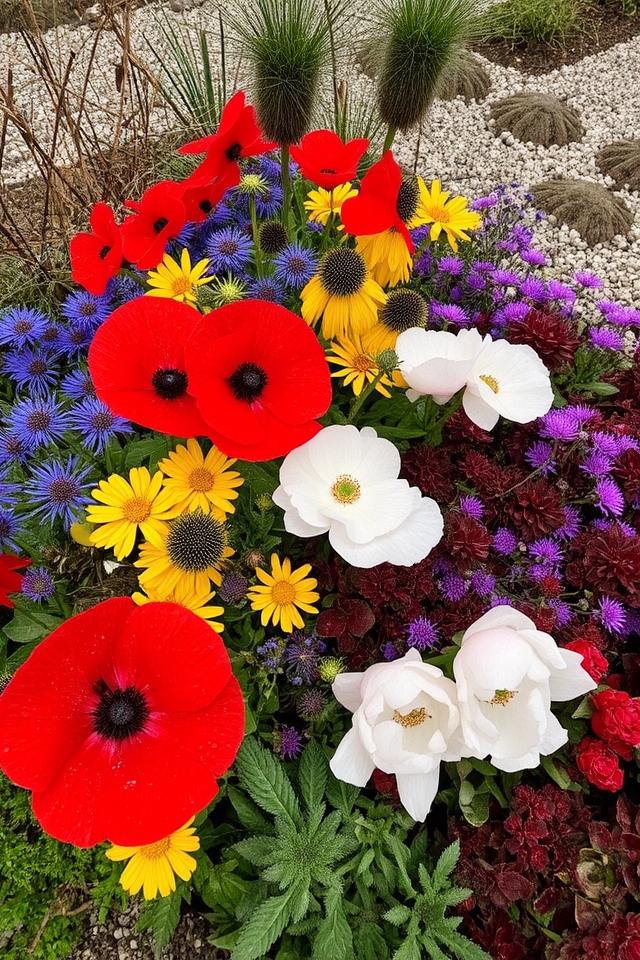
Pair striking shades like scarlet poppies with electric blue echinaceas for a captivating contrast. Combine purple asters with sunny golden rudbeckias for summer brilliance. Add pure white flowers alongside deep burgundy leaves for dramatic autumn flair. Include hardy evergreen succulents and winter-blooming heathers for constant visual appeal. Mix tall, upright plants with rounded forms to create dynamic, colorful layers.
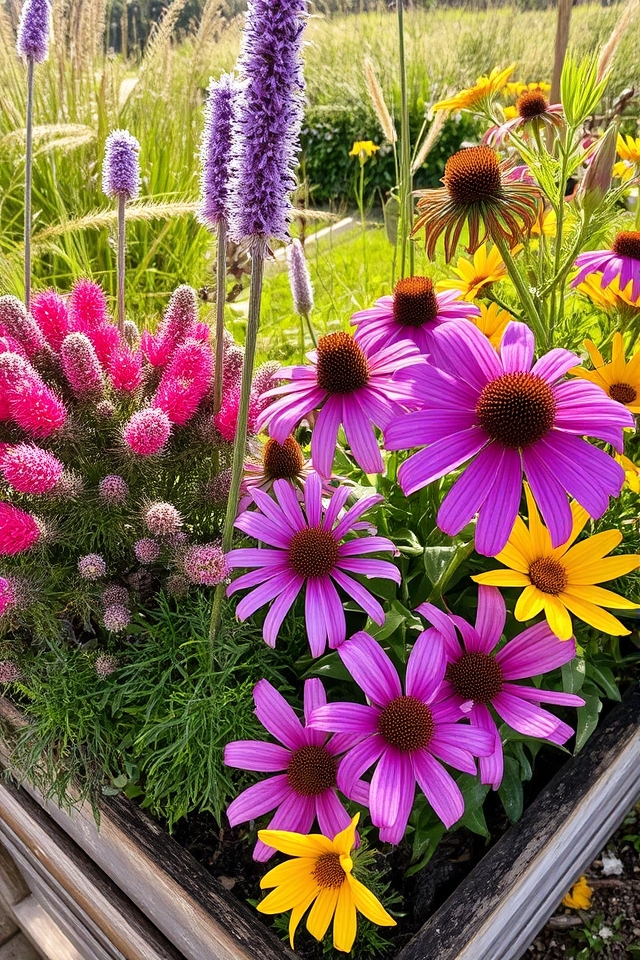
Perennials like sedum, echinacea, lavender, and daylilies need very little attention. They need less watering, adapt to different soils, and resist pests. These plants bloom in different seasons and withstand heat and dry conditions. Their strength means less pruning and feeding, saving you time. Choose local types for best results. Layer heights and colors for a pretty look that’s easy to care for. Focus on strong, independent plants to make gardening easier.

Perennials like hostas, ferns, and astilbes do well in shady spots, adding rich textures and bright flowers. Their strength and ability to adapt make them great for turning dark areas into lively gardens. These plants don’t need much care and add interest with different leaves and flowers. They’re perfect for woodland gardens or shaded patios, creating peaceful, green spaces.
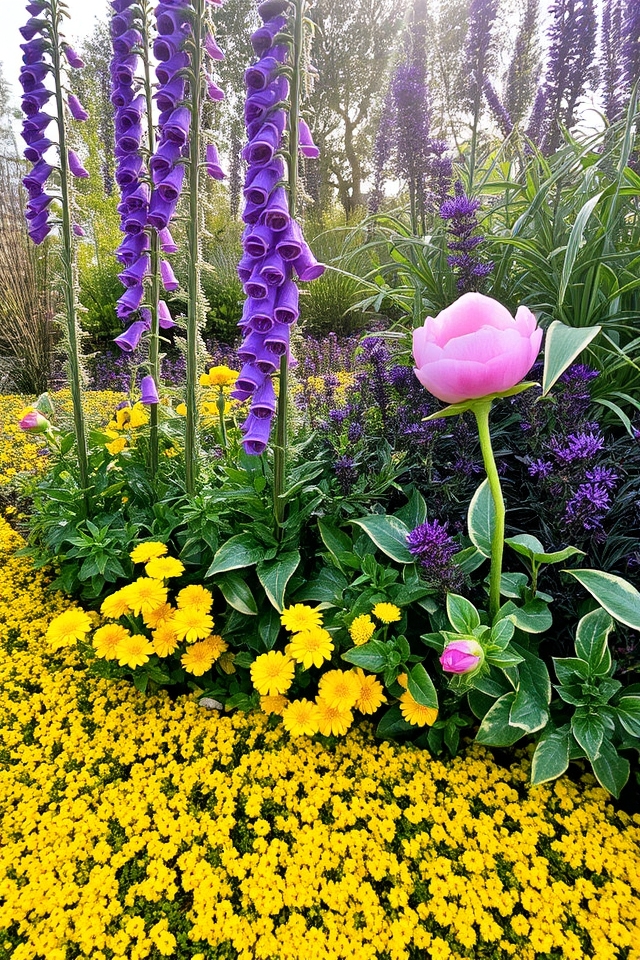
Pairing plants carefully adds depth to your garden by mixing textures, heights, and colors. Put tall plants like foxgloves next to short groundcovers for visual interest. Use colors that go well together—like purple and yellow—to draw attention. Different leaves add dimension, and flowers that bloom at different times keep the garden interesting all year. This helps guide the eye and makes the space feel bigger without losing harmony.
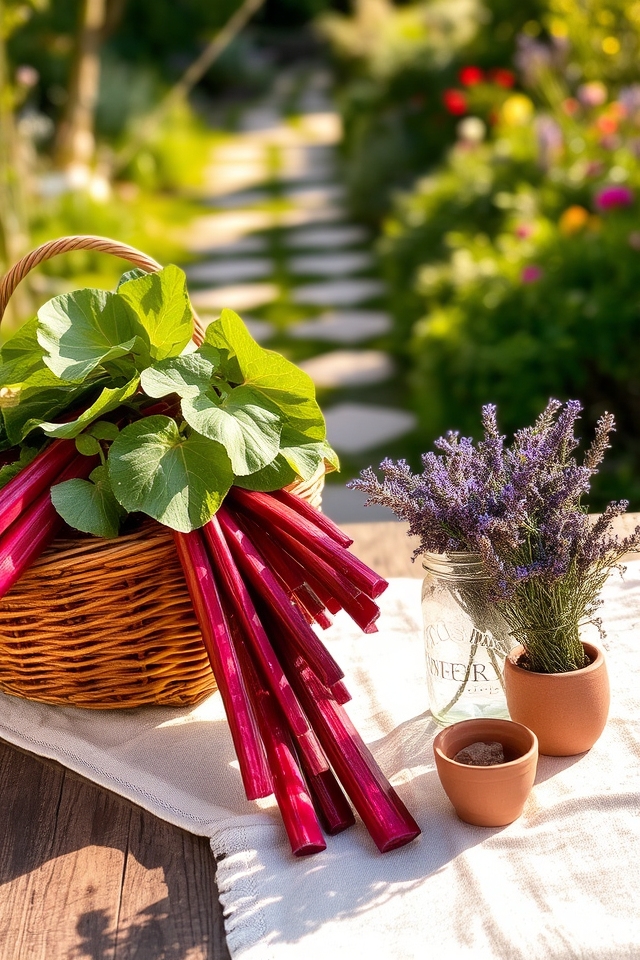
Edible perennials are both useful and beautiful, giving you food and looking good all year. Lavender has fragrant flowers that can be used in cooking, and rhubarb has colorful stalks and leaves. Herbs like sage and thyme can be harvested often and grow well in gardens. These plants add structure, color, and scent to your yard, so you don’t have to replant every year. They make gardening more sustainable, combining beauty and function for you to enjoy.
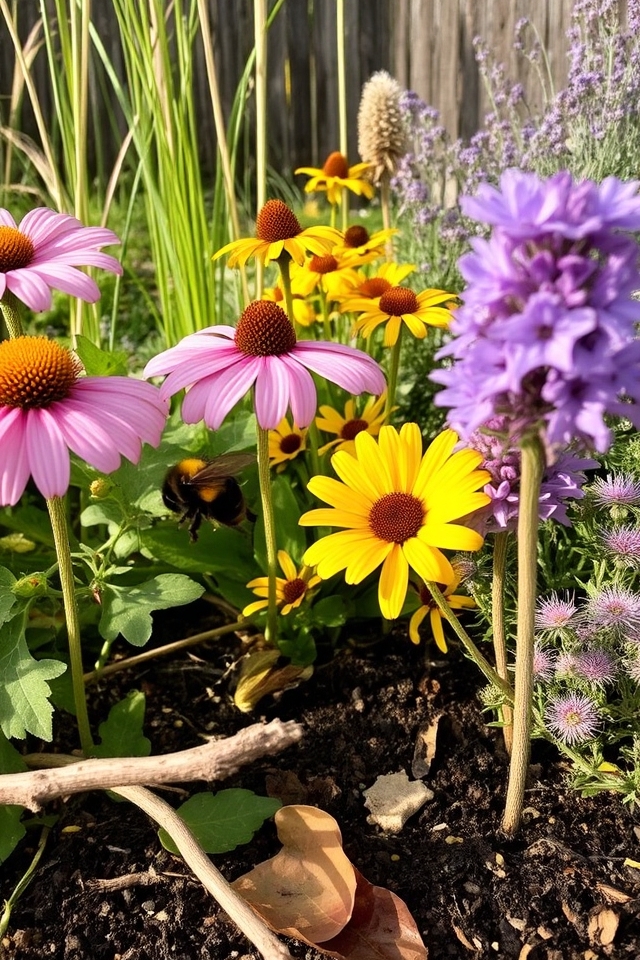
Native plants do well in local weather, needing less water and care. Pick plants that fit your area’s soil, temperature, and rainfall to make them strong. Good choices include coneflowers, black-eyed Susans, and yarrow for different climates. Focus on variety to help pollinators and wildlife. Avoid plants that don’t belong there and can cause problems. Gardens that fit the climate are more sustainable and show off local nature. Choose wisely for gardens that last and need little help.
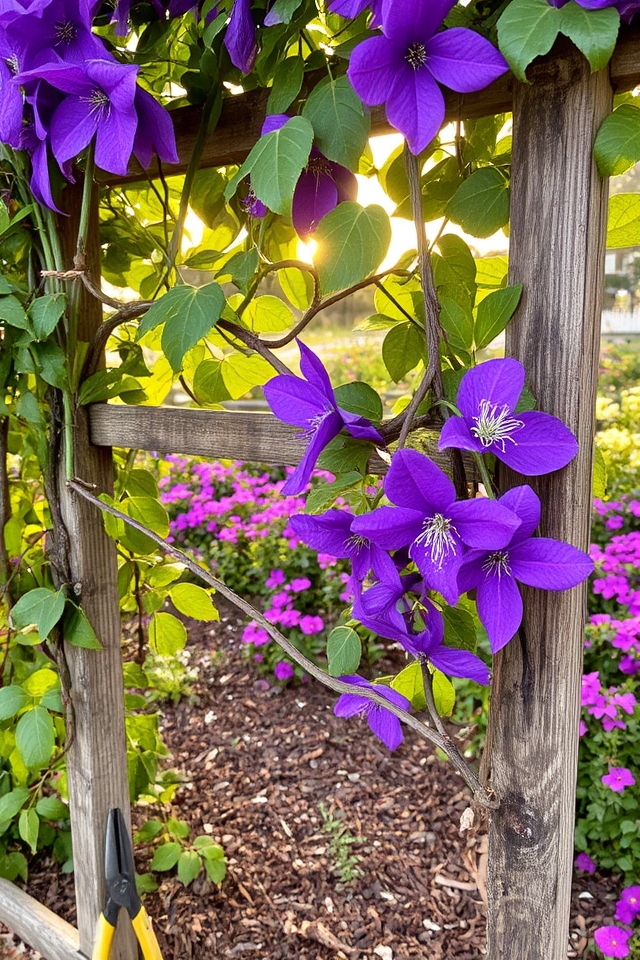
Climbing perennials use structures like trellises, arbors, or fences to grow up. Choose strong plants that fit your climate, such as clematis, wisteria, or jasmine. Tie the stems to the structure and prune them to keep them in shape and encourage flowers. Make sure they get enough sun, good soil, and regular watering. This saves space, looks nice, and is a sustainable way to design your garden.
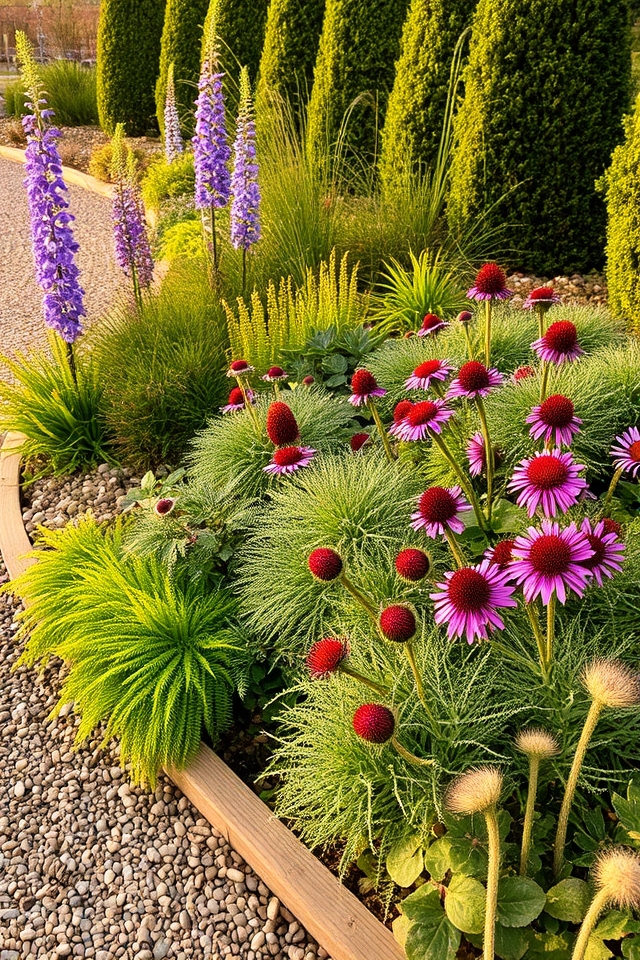
Well-planned perennial borders create clear outdoor spaces with organized designs, layered plants, and even spacing. Use different heights, textures, and colors to make it interesting. Add evergreens for structure all year and flowers that bloom in different seasons to keep it looking good. Group plants that need the same amount of water and sun to make it easier to care for. Define the edges with paths, stones, or edging to make the design clear and useful.

Perennials that resist drought thrive in landscapes that save water, needing very little watering. Examples include lavender, Russian sage, and sedum, which have deep roots, waxy leaves, or grow close to the ground to hold in moisture. These plants use less water, are better for the environment, and look good in different seasons. They are good for dry climates or places with water limits, being strong and easy to care for. Choosing local or adapted types helps them do even better and benefits the environment.
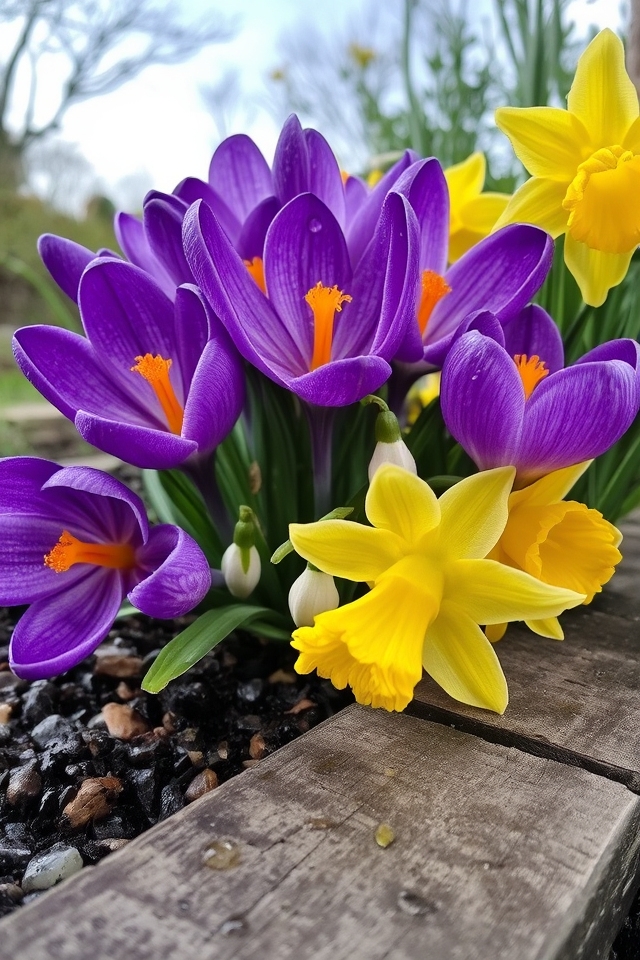
Early-spring bloomers like crocuses, snowdrops, and daffodils bring bright color as winter ends. These strong perennials do well in cold weather, blooming early to show that spring is coming. Their different colors and shapes—from soft whites to bright yellows—add interest. Planting different kinds helps them bloom longer, and they are easy to care for, making them a great choice for the changing seasons.
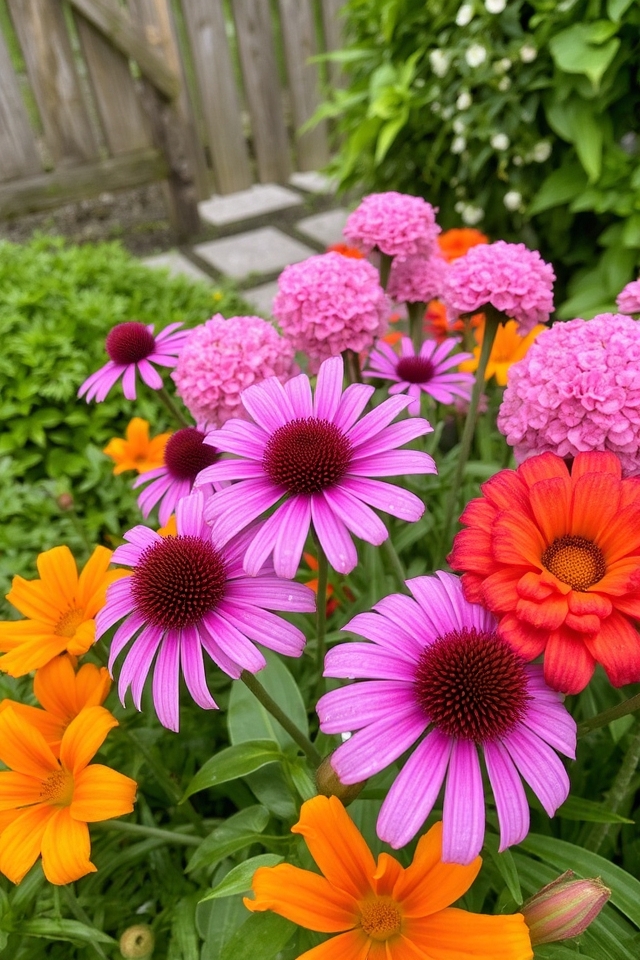
Perennials like coneflowers (Echinacea), sedum (Autumn Joy), and daylilies offer color for a long time. Coneflowers bloom from summer to fall, sedum has lasting blooms from late summer to autumn, and daylilies bloom for weeks if you remove the old flowers. These plants keep your garden looking good, so you don’t have to replace them often. Choose types that bloom at different times for color all year. They are strong and easy to care for, making them great for a beautiful garden.
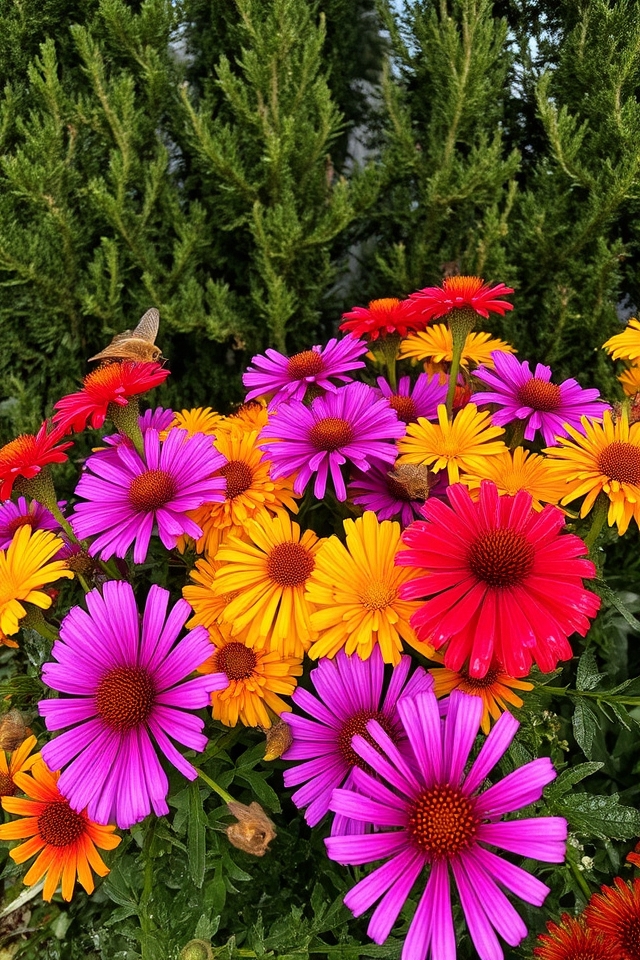
Perennials that bloom in autumn, like asters, goldenrods, and sedums, provide color late in the season, attracting pollinators and keeping the garden interesting. Their bright colors and strong shapes do well in cooler months, adding beauty when other plants are fading. Pair them with evergreens for contrast to keep the garden looking good all year. Choose types that bloom for a long time to enhance the beauty and help the environment.
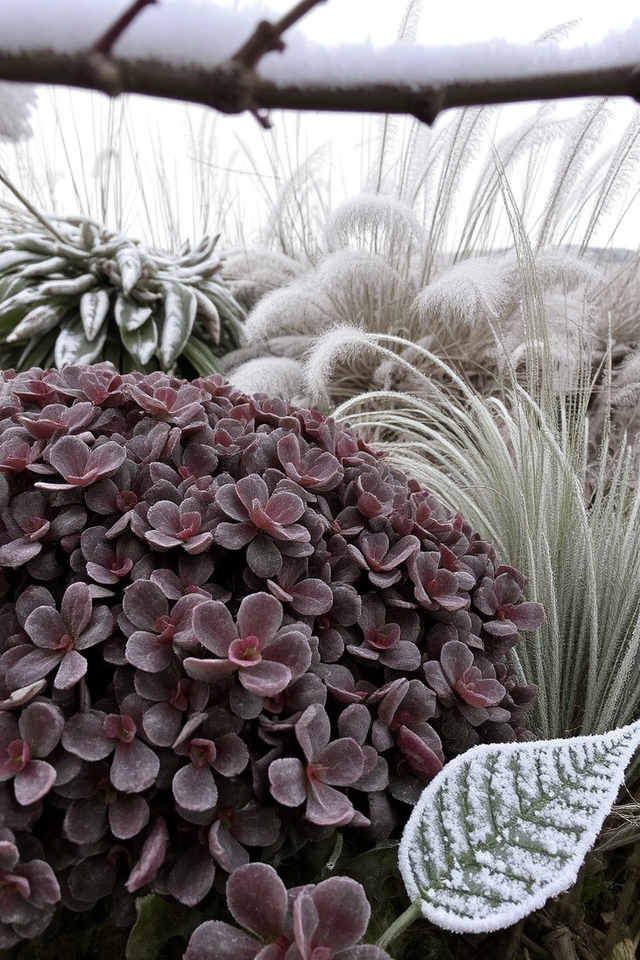
Evergreen perennials keep their leaves all year, adding important texture in winter when other plants are gone. Their shapes stand out against the bare landscape, adding depth and interest. Examples include sedums, ornamental grasses, and hellebores, which have feathery, fibrous, or leathery textures. These plants keep the garden beautiful, anchor winter scenes, and help wildlife, making sure your garden looks good in every season.
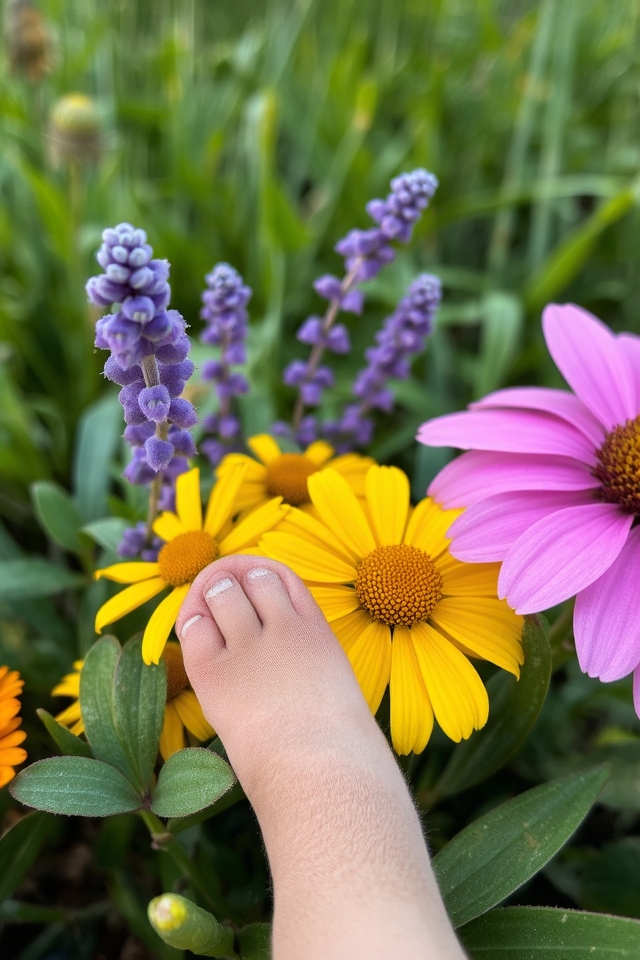
Good perennial choices for gardens with pets include lavender, coreopsis, and echinacea, which are safe for dogs and cats. These plants have bright flowers and are strong, growing in different conditions. Avoid yew, azalea, and lilies, which are dangerous. Add pet-safe plants like lamb’s ear for texture. Choose plants with light scents to avoid bothering pets. Make sure your garden is free of chemical pesticides. These choices create gardens that are pretty and safe for families and pets.
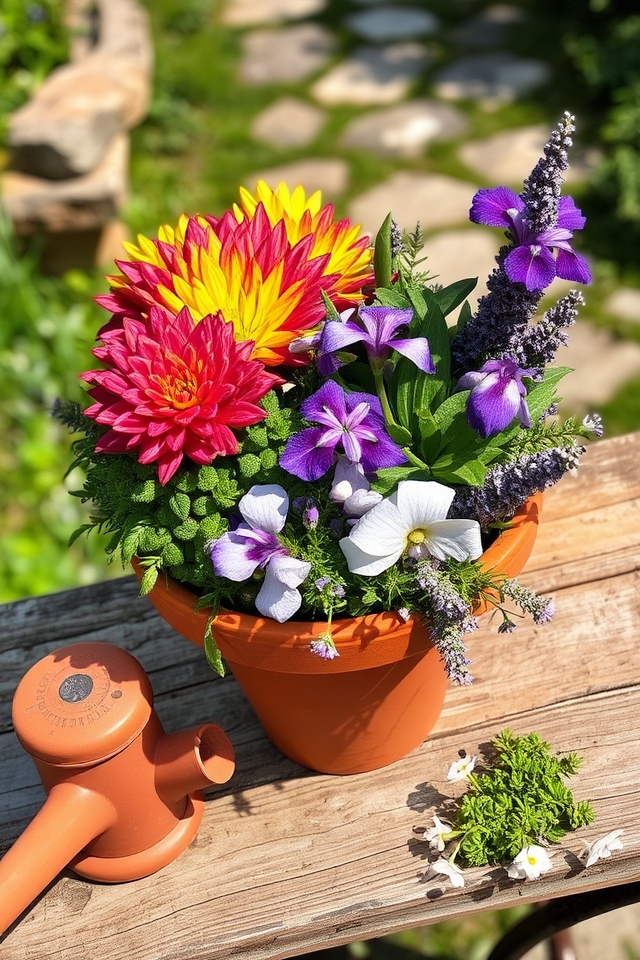
Use small perennials like sedums, dwarf irises, or lavender in pots for easy-care gardens that save space. Pair drought-resistant plants with trailing plants for a nice look. Use soil that drains well and space the plants properly to help them grow. Mix colors and textures for a lively display, making sure each pot gets the right amount of sun or shade. They are easy to care for and great for small areas.
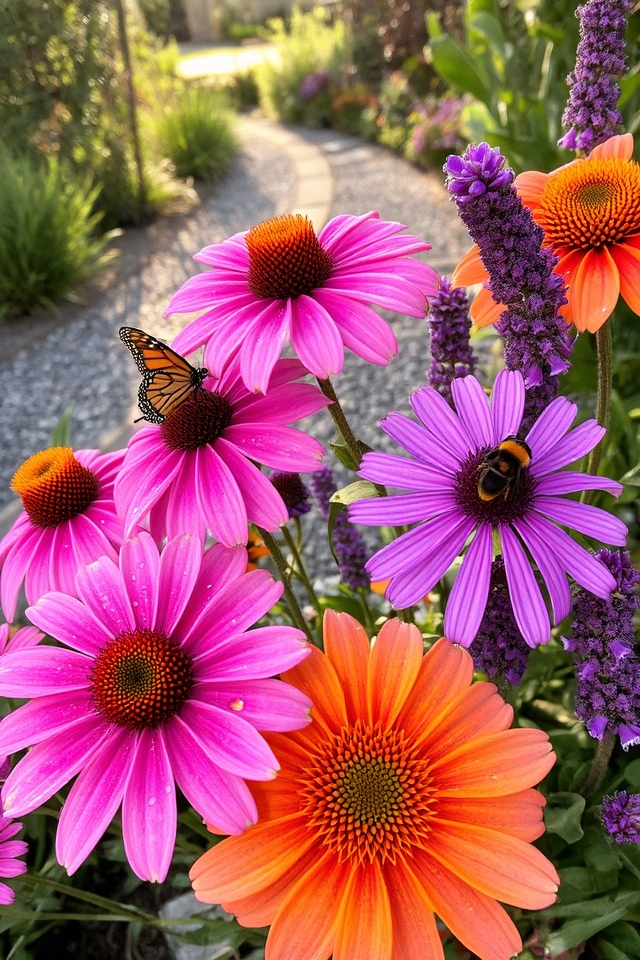
Perennials that help pollinators, like coneflowers, milkweed, and lavender, give nectar and shelter to bees, butterflies, and birds. Local plants improve biodiversity, support healthy ecosystems, and need less care. Avoid pesticides to keep the plants safe for foraging, creating strong habitats that support pollinators all year. Plant them in groups for a pretty look and a steady food source.
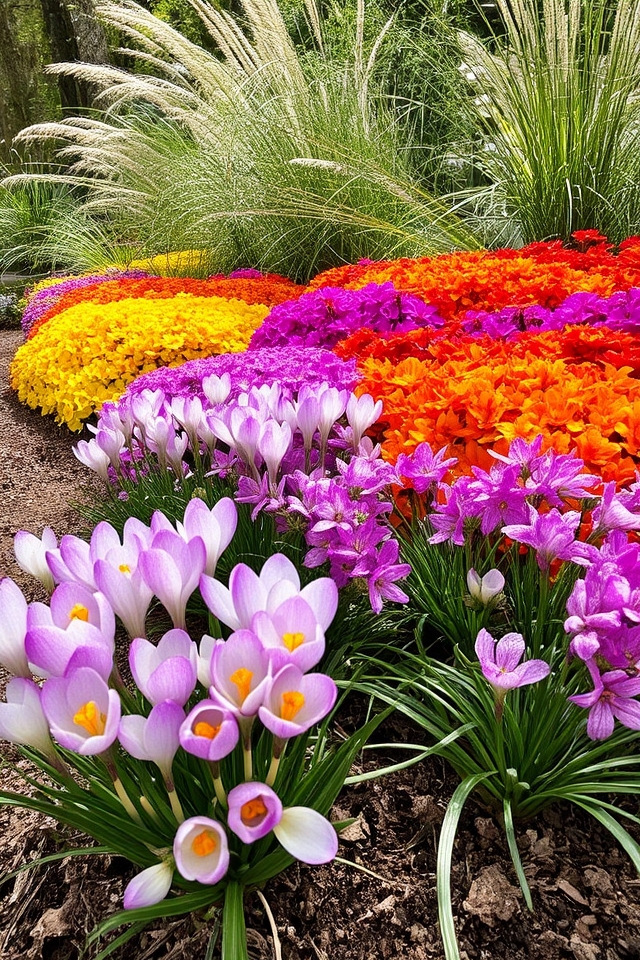
Design your garden with flowers that bloom at different times, choosing plants that do well in each season. Add crocuses for early spring, phlox for summer, and sedum for late in the year to have color for a long time. Use leaves and structure, like ornamental grasses, to keep the garden interesting as the seasons change. Remove old flowers and prune to encourage new growth. Choose strong plants that can handle changing weather, making sure your garden looks good all year with little work.
You’ll create a lively mix of color, texture, and purpose. Bright combinations, strong, drought-tolerant plants like sedum, and shade-loving hostas bloom alongside edible sage and rhubarb. Pollinators fly around pet-safe flowers, and the changing seasons keep the garden looking good all year. Let your garden grow with intention—every leaf a note in nature’s song.

Don't let aphids, slugs, and caterpillars ruin another plant. Take back control with simple, natural methods that actually work.